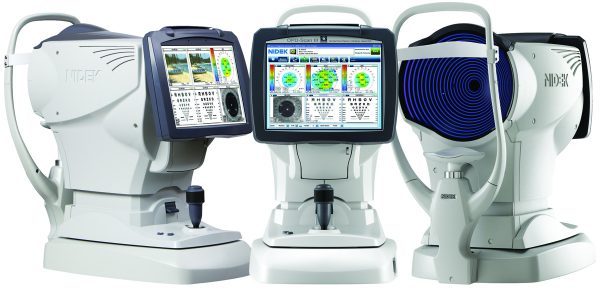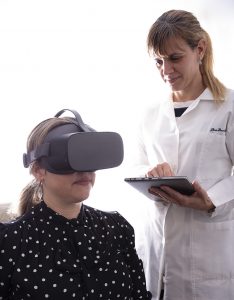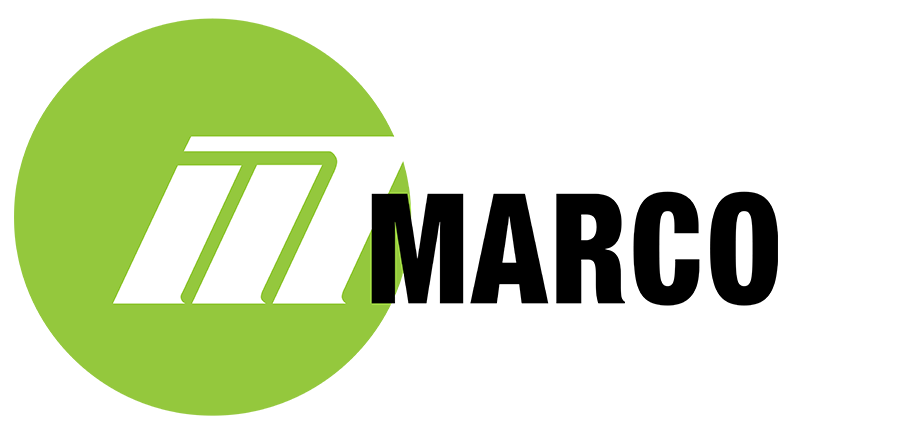
 Claudio Lagunas, OD, is a builder of practices. He has owned nine—with four at one time—but now has just two. One is his established practice in Woodlands, Texas. He and his wife Grisel Lagunas, OD, recently acquired an existing practice in Spring, Texas, when the opportunity was too good not to jump at it.
Claudio Lagunas, OD, is a builder of practices. He has owned nine—with four at one time—but now has just two. One is his established practice in Woodlands, Texas. He and his wife Grisel Lagunas, OD, recently acquired an existing practice in Spring, Texas, when the opportunity was too good not to jump at it.
In order to grow a practice so that it becomes more profitable and efficient, Dr. Lagunas invests in technology. In his practice in Woodlands, there is an OPD3 wavefront system from Marco that he put in nearly 18 years ago. Then about seven years ago, he added the TRS refraction system. “I needed shoulder surgery, and I wanted to be proactive about protecting my other shoulder by being able to sit down and be comfortable versus reaching up and spinning the dial,” he says.
The surgery went well, and he regained full functionality. An associate, he jokes, “commandeered” the one exam lane he had converted to a fully digital system. He had been OK with that because he felt like he was completing exams efficiently with a manual phoropter. But as the doctors are building a new location to move that practice into, “all of our new lanes will be digital with the Marco systems as their quality and durability can’t be matched,” he says.
The six ODs in the larger Woodlands office cover the 50 hours a week that practice is open. In the smaller practice, there are four ODs. Creating efficiency and moving patients through the exam process more quickly result in additional time that patients can spend in the optical and help open the schedule for a few more patient exams.
In addition, the TRS includes what he calls “the money button” — a toggle switch that allows the patient to compare their current prescription with the one derived that day. “Patients can justify the purchase of their new eyewear more easily when they see that there’s a difference. It has increased our multiple pair sales and our capture rate,” he says.
Metrics he needs
What he most appreciates about the OPD-Scan III is its five-in-one functionality and space-saving design. It is an autorefractor, keratometer, pupillometer, corneal topographer and integrated wavefront aberrometer that captures diagnostic measurements in less than 10 seconds per eye.
That helps the doctors determine whether there are aberrations that might make a soft contact lens unsuitable. “Using the wavefront analysis, we can see right away if a soft lens isn’t going to work and can steer the patient to a specialty lens fit,” he says. And then they don’t have to rely on a series of empirical fittings to get to the final fit. “As doctors, we look really good when we can get the specialty lens fi t right from the start,” he says.

Exceeding expectations
For these two pieces of instrumentation, Dr. Lagunas says that the return on investment was “nearly instantaneous.” He justifies that by noting that they make the exams more efficient and quicker, allowing doctors to fit more patients into the day. They minimize transcription or other errors, virtually eliminating remakes due to this kind of mistake. They have helped increase the number of contact lens specialty fits and the capture rate.
With the remote control function now available that can allow doctors to operate the equipment remotely, the implications for being able to “see” patients in other locations or if the doctor is not onsite add to the appeal.
Dr. Lagunas has also added the Olleyes VisuALL from Marco, which helps him consolidate equipment into a single, portable headset. “We will be using this more extensively in our new location. It allows us to bring in virtual field testing without sacrificing floor space or efficiencies,” he says. He can also run these tests without having to dedicate a dark room to this testing. Since it’s so portable, the patient doesn’t have to be as mobile, or a test can be done in the exam room rather than taking the time to move the patient in and out of a special testing area. “In small locations, every square foot counts, so multifunction equipment is a benefit.”
These investments in technology are important to his patients, too. “They like to hear what we’ve added since their last visit,” he says. While some of the specialty instruments that he brings in are used only for patients with certain conditions, every patient sits at the OPD and many experience the TRS autorefraction system, too. They enjoy the experience and the knowledge that they are benefitting from technology that is going to help the doctor deliver the most customized visual solution for them.
Article originally published in Vision Source OD magazine. Learn more about Vision Source here.



